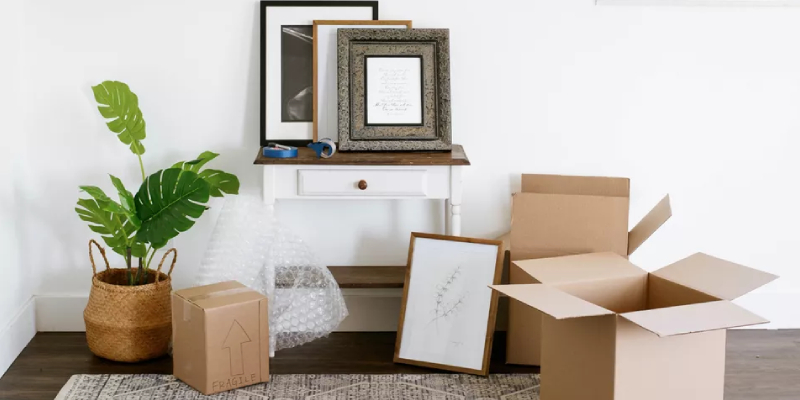
Packing artwork for moving is a difficult task for anyone, but it becomes even more difficult if you are a collector of works of art. You will need to know how to pack artwork for a long-distance move. A fine art handling company can help you with your artwork’s packaging, storage, and installation and make the job simple for you. Most of the artwork created by students of fine arts schools in Chennai has sentimental value and, therefore, should be moved with protection. Professionals can effortlessly move mirrors, picture frames, and other delicate items with better precautionary measures. Let us see how to do that with effective measures and ensure its safety.
How To Pack Artworks?
Picture frames and mirrors are more difficult to pack than basic items, such as pillows and books. However, you can pack and move fragile items independently with a little extra care. Prepare packing materials for artwork and other delicate items. A thin sheet of paper will protect your artwork or mirrors from damage, and corner protectors will prevent damage to the frame. All artwork should be packed in a mirror box or artwork box, made of two layers of cardboard. The basic norm is to approximately give three- or four-inches of space on each side of the artwork while packing.
Wrap the artwork in bubble wrap or newspaper, and place it in a picture box for better protection. Then the artwork should be placed in a box, sealed with packing tape, and labelled. Brown packing paper, glassine paper, and crumpled packing paper are the other types of ideal packing materials. Finally, securing the box with tape is the most crucial step as it saves the artwork while transit when transported through vehicle, train, airplane, or ship.
Labelling your artwork boxes as fragile can make a significant difference when it comes to getting organized for a move. Therefore, place it in a picture box and label it “FRAGILE ART” after packing. Suppose there is more space you can cut a shipping tube to fit in the box, preventing it from moving while transiting. The other materials to fill the extra space will be foam, scrunched packing paper or bubble wraps. Know more
Tips For Packing Various Kinds Of Artworks
There are certain tips suggested by the students of fine arts college in Chennai regarding the packing of artworks to prevent any damage to the valuable item. Let us see them and gain more ideas when dealing with different types of artworks.
- Line the container with protective non-acidic paper and wrap it in bubble wrap to protect the artwork. Place the wrapped artwork in a slightly larger cardboard box. After securing the wrapped artwork, mark the box “fragile”.
- Parchment paper and painter’s tape are the best solutions when packing artwork for a move.
- If your artwork is protected by glass, use painter’s tape to make an X on the glass surface. If the artwork is not protected by glass, wrap it in several layers of plastic wrap from your kitchen or purchase pallet wrap at craft stores.
- If you are moving artworks, make sure you use boxes made of cardboard. If the artwork is framed, you’ll want to take extra precautions to keep them safe. Make sure you use packing paper or foam to fill any gaps in the artwork.
- Framed artwork can be packed together in a single box if there is enough room. If your artwork is not protected by glass, use packing paper instead of tape to protect it.
- Small picture frames and loose photographs do not need a large box. Instead, use bankers boxes or a small cardboard box for your packing needs.
- When moving artwork, avoid packing it with other items in the same box, and place it surrounded by mattresses or large furniture that will not move during the ride.
- If you cannot pack your artwork collection on your own, contact a professional moving company for the packing services you require.
- If you are shipping artwork internationally or domestically, hiring a fine art handling company is the best option as you must comply with all international shipping regulations and prohibitions.
- Don’t ship wet artwork, and wait a few extra days after varnishing your artwork before shipping it.

Precautionary Measures To Take Care While Packing
Packing your artwork and antiques on the go without appropriate packing materials is not recommended. You will have to list everything that ensures its safety as a first step. Picture boxes and telescoping boxes are ideal for protecting artwork and antiques. Another essential step before packing artwork, antiques, or other collectibles, is to obtain an appraisal and insurance for the item.
The other packing criteria here will be to place your expensive antiques or artwork in a box with two pieces of cardboard or foam board on top and beneath. Double-packing your artwork will ensure that it is protected from damage. Wrap your artwork in acid-free tissue paper, store it in a water-resistant bag, and protect it with bubble wrap. For better protection, the artwork or antique should be placed on the top half of the cardboard and taped to the back of the cardboard. Always place it with its face toward the space in the larger box. Finally, fill the box to the brim with packing paper and bubble wrap.
Final Thoughts
To move mirrors, picture frames, artwork, and other fragile flat-lying items, you will need to gather the appropriate moving boxes and supplies. Remember that this will help prevent breakage while transporting in a moving container. With suitable cushioning and packing materials, you can reduce the risk of damage. Most importantly, you will have to test the box as a final step and add additional padding if necessary.

